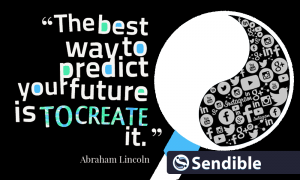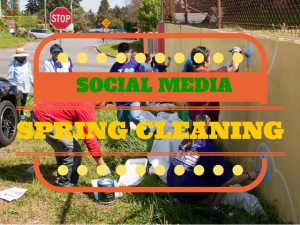 In many organizations, knowing when to pursue a specific lead comes down to spending a huge amount of time checking in on leads, emailing, calling, and having a sense of intuition regarding when a particular lead deserves attention.
In many organizations, knowing when to pursue a specific lead comes down to spending a huge amount of time checking in on leads, emailing, calling, and having a sense of intuition regarding when a particular lead deserves attention.
Sales reps are expected to turn leads into customers by being in tune with their database or territory. This approach works to some extent, but it’s hugely inefficient, and it’s becoming much less effective in a world where potential buyers do most of their research online before ever engaging a salesperson.
With the rise of online marketing, it’s now easier than ever to catch more leads earlier in the buying process. If your existing site just isn’t getting the traffic or leads you’re looking for, this article will give you five solid ideas for attracting visitors to your website, converting them into usable leads, and convincing them to buy.
1. Provide High-Quality Content
Quality content truly is king on the Internet. Not only are search engines becoming smarter all the time, but buyers are becoming much more selective. Without a wealth of quality content on your website, visitors won’t stick around long enough to learn about your company or its offerings. They’ll also be unlikely to share their contact information if your website lacks unique, educational content. And without engaging content (audio, video, imagery, text, etc.), visitors probably won’t take advantage of any of the conversion techniques listed below.
Quality content means knowing your audience, avoiding corporate jargon, and having a familiarity with the subject you’ll be writing about. But it also means keeping your content updated and fresh. Having a blog on your website—and updating it regularly—is one of the easiest ways to keep your quote of fresh content filled. And because Google and other search engines love websites with regularly updated content, a blog will ultimately drive more traffic and more leads to your site.
2. Have Conversion Forms on Your Website
Forms allow people to sign up for your email newsletter, subscribe to your mailing list, or download an offer. There’s no magic answer to how many fields your forms should contain, but here’s a good rule of thumb: Collect only the information you really need. In most instances, that will include a visitor’s name and email address, and perhaps their phone number. Also, consider adding a privacy message indicating that your visitors’ email addresses won’t be shared or sold.
3. Provide Calls-to-Action that Point Visitors to Convertible Content
Calls-to-action, or CTAs, can be added to any of the content you’re already producing in order to make each effort more effective at converting leads. It’s important for you to remember that effective calls-to-action drive a visitor to take a desired action, which in this instance involves handing over their name and contact information. That’s why you’ll need to always offer CTAs that provide real value. Giving away no-risk-offers with a high perceived value—free whitepapers, checklists or reports, for instance—will result in conversions. “Contact Us,” by the way, is the least effective form of a CTA. Don’t rely on that as your only option for conversion.
4. Begin Hosting Free Online Webinars
Webinars can be a great lead generation tool for your business. Start preparing for the event about eight weeks in advance by choosing a topic that addresses your customers’ problems and pain points. You’ll also need to choose a presenter (and possibly a moderator), a date and time for the event, and a webinar system (we’re fans of the easy-to-use GotoWebinar system).
Roughly four weeks prior to the webinar, you’ll want to create your slide deck and add a registration landing page to your website. You’ll also need to set up your event with your webinar system, and start practicing for the big day. Start promoting the event about two weeks prior by sending a note to your email list and posting about the upcoming webinar on social media and your blog. The day before, send a quick and simple reminder email to everyone who has already registered.
5. Include Video on Your Homepage
Did you know that only 10 percent of people remember what they hear, and only 20 percent of people remember what they read? Here’s another surprising stat: Eighty percent of people remember what they see and do. That’s one reason visual communication is so important. And onsite video is perhaps the most important visual tool you can use to keep customers on your website.
Digital & Social Articles on Business 2 Community
(41)







